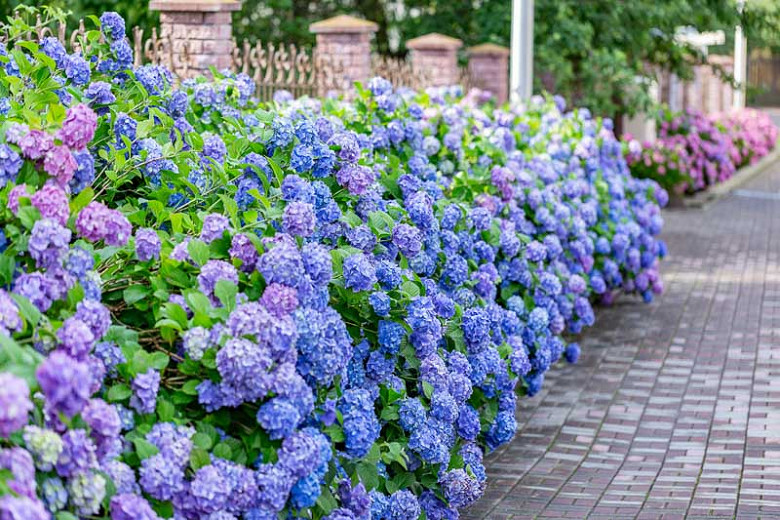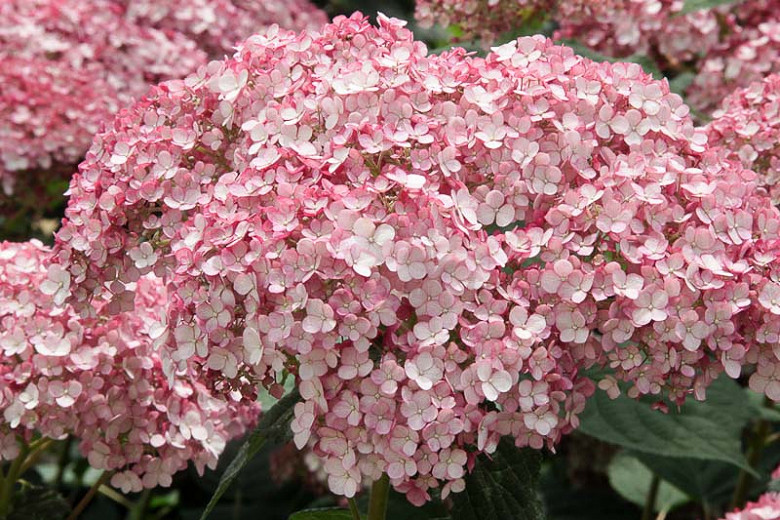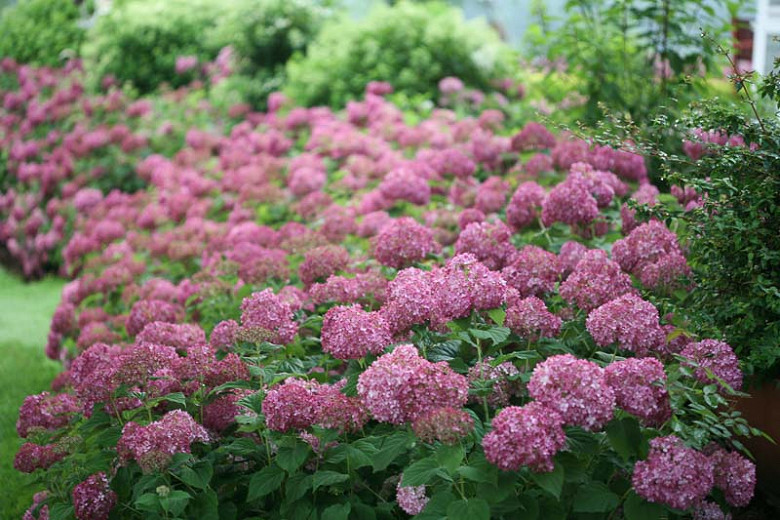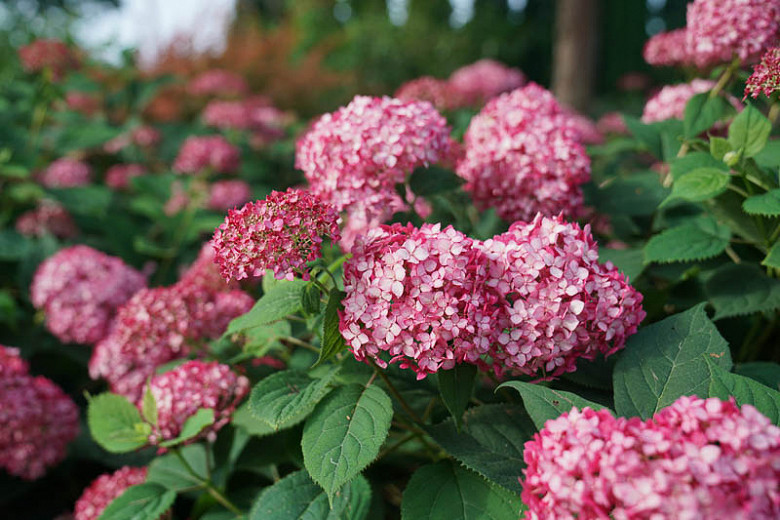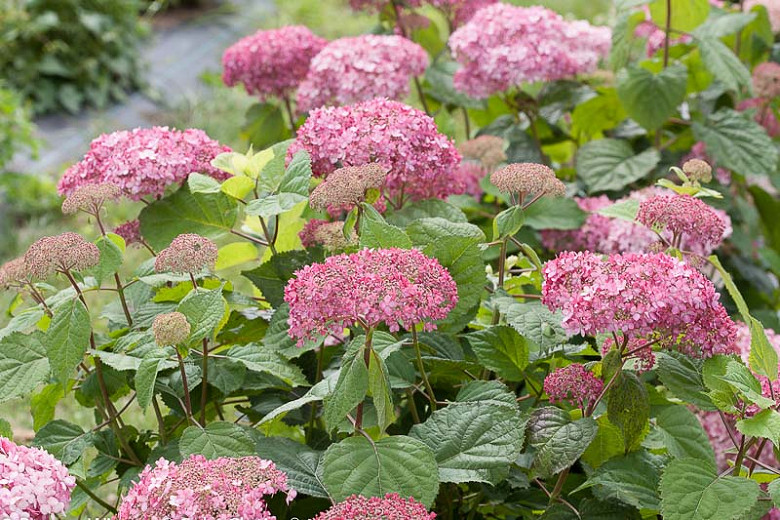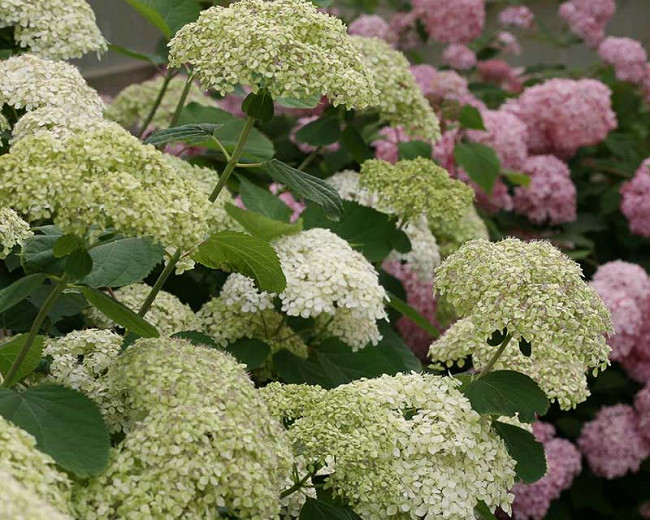Hydrangea macrophylla All Summer Beauty
Hydrangea macrophylla ‘All Summer Beauty’ is a compact, bushy, deciduous shrub boasting a profusion of ball-shaped flower clusters densely packed with pale blue florets in acidic soils or rose-pink florets in alkaline soils. Blooming on both old and new growth, this reblooming hydrangea flowers consistently and provides gorgeous flowers all summer long, as flower buds are produced not only in the fall but also in spring and summer.
Hydrangea macrophylla 'All Summer Beauty' is a compact, bushy, deciduous shrub boasting a profusion of ball-shaped flower clusters densely packed with pale blue florets in acidic soils or rose-pink florets in alkaline soils. Blooming on both old and new growth, this reblooming hydrangea flowers consistently and provides gorgeous flowers all summer long, as flower buds are produced not only in the fall but also in spring and summer. The flowers are borne above the handsome foliage of bright green, elliptic, slightly serrated leaves. All Summer Beauty hydrangea is great for small gardens and is the perfect size for patio containers.
- Grows with an upright, rounded habit to 3-4 ft. tall and wide (90-120 cm).
- Performs best in part shade in humus-rich, moist, well-drained soils. Shelter from cold, drying winds. Mulch annually in spring.
- Perfect from foundation plantings to container plantings. Massed or as an accent plant. Excellent cut flowers too!
- Remove spent flowers to promote new blooms.
- Keep an eye out for aphids, capsid bugs, red spider mites, stem and bulb eelworms, vine weevils, scale insects, honey fungus, gray molds, powdery mildews, and leaf spots.
- To change the color of your Hydrangea, add aluminum sulfate to the soil to make the flowers bluer or add lime to the soil to make them pinker. Treatment should occur ahead of time (late fall or early spring)
- This beautiful deciduous shrub should be pruned after flowering by cutting back the stems to a pair of healthy buds. Prune out weak or winter-damaged stems in early spring.
- Propagate by softwood cuttings in early summer, or by hardwood cuttings in winter.
- Hydrangea macrophylla species is native to Japan. It is reported from seaside habitats as well as mountains in Japan, from Honshu southwards. This species has naturalized in China, New Zealand, and the Americas.
- May cause mild stomach upset if ingested, and contact with foliage may aggravate skin allergies. Wear gloves and other protective equipment when handling.
- Toxic to dogs, toxic to cats, toxic to horses.
Requirements
| Hardiness | 5 – 9 |
|---|---|
| Heat Zones | 6 – 9 |
| Climate Zones | 3, 3B, 4, 5, 6, 7, 8, 9, 14, 15, 16, 17, 18, 19, 20, 21, 22, 23, 24, H1 |
| Plant Type | Shrubs |
| Plant Family | Hydrangea |
| Exposure | Partial Sun |
| Season of Interest | Summer (Early,Mid,Late)Fall |
| Height | 3' – 4' (90cm – 120cm) |
| Spread | 3' – 4' (90cm – 120cm) |
| Spacing | 36″ – 48″ (90cm – 120cm) |
| Water Needs | Average |
| Maintenance | Low |
| Soil Type | Clay, Loam, Sand |
| Soil pH | Acid, Alkaline, Neutral |
| Soil Drainage | Moist but Well-Drained |
| Characteristics | Dried Arrangements, Cut Flowers, Showy |
| Garden Uses | Beds and Borders, Patio and Containers, Small Gardens |
| Garden Styles | City and Courtyard, Informal and Cottage, Traditional Garden |
